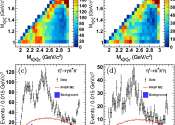Exploring strangeness and the primordial Universe
Physicists believe that in the Universe's first ten microseconds free quarks and gluons filled all of spacetime, forming a new phase of matter named 'quark-gluon plasma' (QGP). Experimental and theoretical work at CERN was ...








